Rate or rates may refer to:
Rate or rates may refer to:
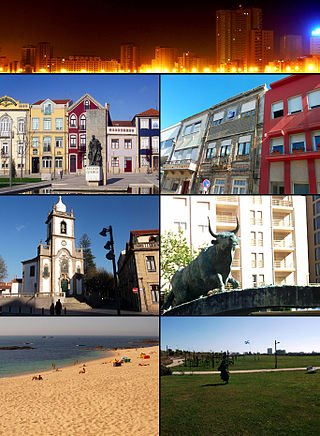
Póvoa de Varzim is a Portuguese city in Northern Portugal and sub-region of Greater Porto, 30 km (18.6 mi) from its city centre. It sits in a sandy coastal plain, a cuspate foreland, halfway between the Minho and Douro rivers. In 2001, there were 63,470 inhabitants, with 42,396 living in the city proper. The city expanded southwards, to Vila do Conde, and there are about 100,000 inhabitants in the urban area alone. It is the seventh-largest urban agglomeration in Portugal and the third largest in Northern Portugal.
Santo André, São Paulo is a Brazilian municipality.

The siglas poveiras or marcas poveiras is a proto-writing system that has been used by the local community of Póvoa de Varzim, Portugal, for many generations.
Gandra may refer to:

Póvoa de Varzim, in Portugal is an ethno-cultural entity stemming from its working classes and with influences arriving from the maritime route from the Baltic Sea to the Mediterranean. The most charismatic of its communities, formerly overwhelmingly dominant, is the fisher community. It has significant similarities with those of the Danish fjords and it is one of Portugal's oldest ports. Póvoa de Varzim has distinct cultural traits and a strong local identity.

The economy of Póvoa de Varzim in Portugal is driven by tourism, manufacturing, construction, fishing, and agro-business. During the 2001 census, 1770 companies are headquartered in Póvoa de Varzim, of which 2.82% were of the primary sector, 33.73% of the secondary and 63.45% of the tertiary. Despite its weight in Greater Porto international trade is weak, in 2004 it represented 1.1% of departures and 0.9% of arrivals, its coverage rate of arrivals against departures suppressed the 100% mark. The activity rate had grown from 48% to 51.1% from 1991 to 2001, but there were 3353 citizens unemployed in June 2006.

Ethnography and History Museum of Póvoa de Varzim is a museum with a maritime and ethnic theme located in the Portuguese city of Póvoa de Varzim. The museum is located in Solar dos Carneiros, former home of the Viscount of Azevedo.
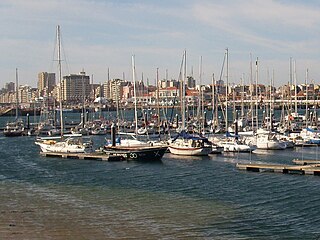
Póvoa de Varzim in Portugal has developed a number of sporting venues and has hosted several national, European and world championships in different sports. 38% of the population practise sport, a high rate when compared to the national average.
Póvoa de Varzim Municipal Stadium is a multi-use stadium in the city park of Póvoa de Varzim, Portugal.

Diana Bar is a beach library and gallery in Póvoa de Varzim, Portugal. Before being a public library it was a historic café with the same name. It is located in the south end of the city's main waterfront avenue, the Banhos Avenue.
Calf most often refers to:
Junqueira may refer to:
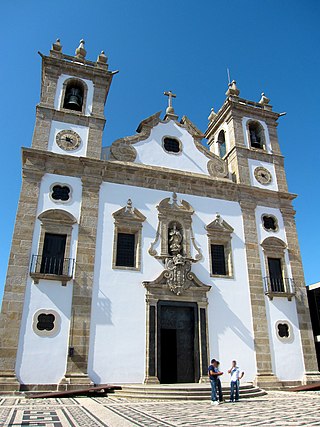
Praça Velha, formerly known as Praça (Square), was the primitive civic center and the market square of the city of Póvoa de Varzim in Portugal. It is located in Bairro da Matriz historic district and is surrounded by the main church of Póvoa de Varzim, the primitive Town Hall and the house of a notable 17th-century Póvoa de Varzim seafarer.
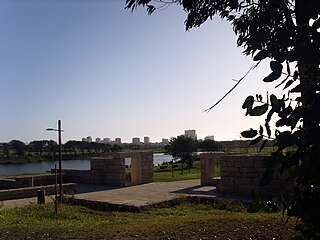
The Póvoa de Varzim City Park is an urban park of Póvoa de Varzim in Portugal.
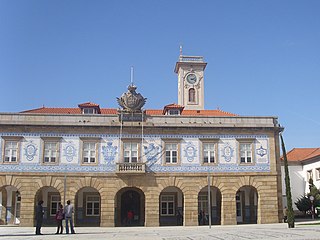
Póvoa de Varzim City Hall is the seat of government of the municipality of Póvoa de Varzim, Portugal. It houses the office of the mayor of Povoa de Varzim, the city council chamber, as well as other city services.

The history of Póvoa de Varzim, Portugal, and its development as a maritime trade and fishing hub, have been greatly influenced by its location at the entrance to one of Portugal's best natural ports.
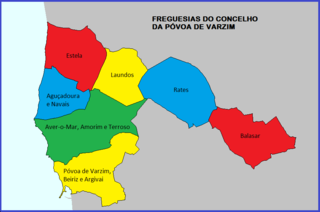
Póvoa de Varzim is divided into seven civil parishes, most of which were created as civil entities in the 19th century and some were merged in the 21st century, but are directly derived from ecclesiastical parishes existing since the Early Middle Ages. These parishes are grouped into three areas recognized by the Municipal masterplan: urban (city), suburban and rural.
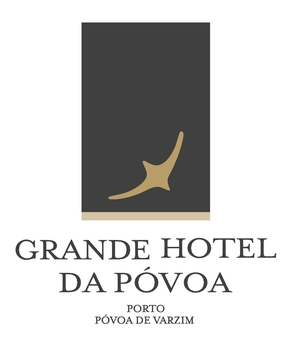
Grande Hotel da Póvoa, in earlier times Palace Hotel, is a historic hotel located in Póvoa de Varzim, Portugal. It has a modernist style of great impact and is located at Passeio Alegre square, in Póvoa de Varzim City Center waterfront.
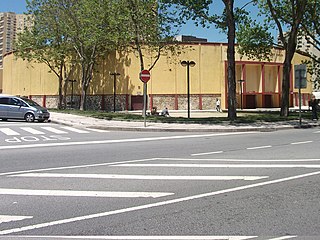
Póvoa de Varzim Bullfighting Arena was a bullring in Póvoa de Varzim, Portugal. It is located on Avenida Vasco da Gama, on the northern waterfront of the city. Bullfighting, horse shows, and concerts are held in the arena.

The architecture of Póvoa de Varzim, in Portugal, demonstrates a broad variety of architectural styles over its thousand years of history. 11th-century Romanesque, 16th-century Mannerism, 18th-century Baroque, late 18th-century neoclassicism, early 20th-century Portuguese modernism and late 20th- to early 21st-century contemporary architectural styles and more are all represented in Póvoa de Varzim. As a whole it represents a rich eclectic tradition and innovation shaped by the people, their beliefs and economy.